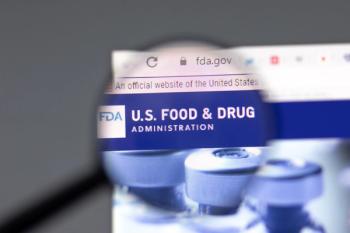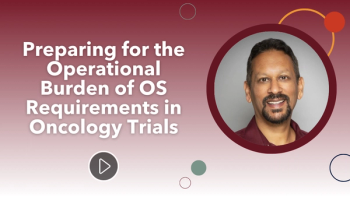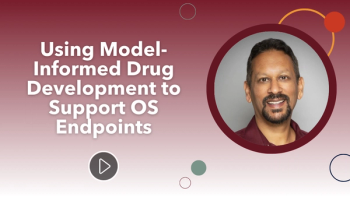
- Applied Clinical Trials-09-01-2006
- Volume 0
- Issue 0
New Research Models Spur Third-World Efforts
Rise in foreign studies requires attention to ethical issues, investigator training.
After years of neglect, new political, social, and scientific developments are boosting support for research on new drugs and vaccines to treat a host of deadly diseases plaguing the poorer nations of the world. The Bill & Melinda Gates Foundation deserves much credit for putting this important issue at the top of the R&D agenda for international health organizations and the pharmaceutical industry. In addition, nonprofit partnerships with expertise in drug and vaccine development and knowledge of third-world nations and diseases are offering more effective R&D strategies. These developments also are prompting regulatory bodies and international organizations to address the many ethical issues related to international clinical studies that have generated charges about wealthy nations using poor patients as guinea pigs.
Jill Wechsler
New research landscape
Recent efforts to spur R&D on needed treatments with little market value in industrial states have involved tax breaks and patent extensions to "push" research, and advance purchase commitments (APCs) to "pull" new products to market. These tactics may stimulate some research, but often yield treatments with low value and high cost for patients in poor countries.
A more promising model involves partnership arrangements that aim to encourage more drug research by reducing the risk for industry sponsors. This approach has altered the landscape for developing new drugs to treat neglected diseases, according to an important study by researchers at the London School of Economics headed by Dr. Mary Moran, now based in Australia. Published in September 2005 by the Wellcome Trust, the report documents how public–private partnerships (PPPs) in the last five years have spurred R&D on new treatments for third-world health conditions such as malaria, tuberculosis, leprosy, leishmaniais, schistosomiasis, dengue fever, and others; report available from
Pharma companies developed only a handful of new drugs to treat neglected diseases in the previous 25 years, according to the report. Now manufacturers are investing their own resources in this area and joining PPPs such as Medicines for Malaria Venture (MMV), the TB Alliance, Drugs for Neglected Diseases (DNDi), and the Institute for One World Health (iOWH). In addition to developing needed drugs, these initiatives may deflect criticism over past inaction in this area, and also help multinational companies reach major emerging markets in India and China.
Moreover, a growing number of niche biotech companies regard PPPs as prime opportunities to expand research programs, similar to efforts to develop orphan drugs for small patient populations. R&D partnerships enable these firms to parlay expertise in genomics, bioinformatics, and other innovative technologies into new development programs, as well as to gain opportunities to license intellectual property to larger partners. And both pharma and biotech companies anticipate that these R&D efforts eventually may yield spin-off products with commercial value in the West.
Consequently, Moran reports that these partnerships launched 63 new research projects from 2000 to 2004, which should translate into nine or 10 new drugs by 2010. This investment has occurred largely outside normal government health funding programs and has been supported primarily by substantial funding from the Gates, the Rockefeller Foundation, and other private donors.
Reducing research risk
An important feature of PPPs is for the nonprofit disease group to manage and assume risk for large-scale clinical trials in developing countries. The aim is to support a "no profit–no loss" approach to industry R&D. Instead of underwriting the costly late-stage clinical development process, the new model calls on pharma manufacturers to be more involved in identifying promising compounds and conducting early tests. Then the nonprofit partner, with its local research networks and experience navigating national regulatory requirements, takes over the complex process of conducting clinical trials and seeking product registration in multiple countries.
The private sector's prime expertise is finding drugs, explained Moran at a conference sponsored by the Brookings Institution in Washington, D.C., last April. "Where they're less interested and less expert is doing large-scale trials with pregnant women and children in remote developing countries in diseases that they don't know about." So the PPP model "swaps roles around," she explained. "Industry moves upstream" to do high-level innovation that carries less liability risk, and public groups move downstream to clinical development and dealing with regulatory authorities and patient groups. Lower expenditures produce drugs at not-for-profit prices and with higher health value to patients in developing countries.
The collaborative models differ. Some PPPs are establishing their own labs to develop drugs without any industry partner, often contracting out clinical research, product formulation, and manufacturing to separate entities. Contract research organizations (CROs) are involved in over one-third of PPP projects, often called on to handle specific tasks such as animal testing and local clinical trial monitoring.
Push for funding
The limiting factor on all these initiatives is inadequate funding from wealthy nations. The Moran report notes that more than half of the nearly $255 million contributed to PPPs as of April 2005 came from the Gates Foundation; the United States provided $16 million, much more than other governments, but still very little. Most of the public funding for third-world health currently goes to treatment programs such as the Global Fund to Fight AIDS, Tuberculosis and Malaria and the President's Emergency Plan for AIDS Relief (PEPFAR). These programs can "pull" new drugs to market, but have not stimulated new research on less visible diseases.
Fortunately, private support is expanding. The Gates Foundation announced in July that it was awarding $287 million in grants over five years to 16 scientific teams around the world for HIV vaccine research, with the usual requirement that all grantees share research data in real time to spur discovery. The subsequent disclosure that Warren Buffett will donate $31 billion to the Gates Foundation will further expand the organization's research portfolio. If governmental aid programs matched these levels, researchers believe that many new treatments could reach patients fairly quickly.
Foreign Trials: Complex & Costly
Whether a clinical trial tests a drug for a third-world disease or for a condition that affects patients all over the world, foreign research can be a risky business. Despite good intentions to bring needed medical treatments to neglected populations, sponsors too often face charges of coercion or exploitation.
The growing demand for more study participants with certain conditions, however, is fast expanding the number of studies in foreign countries. An informal industry poll indicates that in 2005 about half of new subjects were recruited to studies outside the United States and Europe. More than one-fourth of subjects in research funded by the National Institutes of Health (NIH) participate in international studies, and about 30% of clinical trials submitted to the Food and Drug Administration are conducted outside the United States.
This foreign study boom has generated a host of ethical and regulatory concerns about the adequacy of informed consent, need for investigator training, institutional review board (IRB) operations, and continued treatment of trial participants following study conclusion. The most contentious issue is what kind of comparator is appropriate in a trial where effective treatment is available.
A number of organizations are addressing these concerns. The CIOMS (Council of International Organizations of Medical Sciences) issued revised guidelines on international biomedical research in 2002 that discuss such ethical issues as when it may be appropriate for sponsors to use a placebo, research on populations with limited resources, and studies involving women who might become pregnant.
Good global standards
FDA is revising its rules for accepting non-U.S. studies not conducted under an IND. One aim is to clarify what kind of evidence a sponsor has to file to document that a study followed good clinical practices and meets FDA requirements for IRB review, informed consent, privacy, financial interest, and other issues.
The HHS Office of Human Research Protections (OHRP) has been examining these issues as part of a broader assessment of how "equivalent" foreign IRBs and regulatory authorities are to U.S. entities. OHRP is focusing on the need for more training of investigators and IRB members in developing countries on research ethics and standards and examining with FDA whether sponsors and funding agencies are doing enough to support such efforts or if new policies are needed.
On the ground, PPPs are addressing research ethics to ensure that clinical trials fully consider the needs and concerns of local populations. For example, the International Partnership for Microbicides, which supports development of products to reduce male-to-female HIV transmission during intercourse, establishes Community Advisory Groups to protect trial participants and deal with local concerns.
Jill Wechsler is the Washington editor of Applied Clinical Trials, (301) 656-4634
Articles in this issue
about 19 years ago
The EDC Decisionabout 19 years ago
Training in Pediatric Researchabout 19 years ago
Spotting the "New" Managed Site Networksabout 19 years ago
Drug Development on Rails: Part Twoabout 19 years ago
Research for the Real Worldabout 19 years ago
Building Research Capacity into Drug Developmentabout 19 years ago
eShowcase: ViewPoint 3.6about 19 years ago
eShowcase: PHT eSense Sensorsabout 19 years ago
Australia: The Number One Place for Clinical Trials?about 19 years ago
eShowcase: TrialSpace DesignerNewsletter
Stay current in clinical research with Applied Clinical Trials, providing expert insights, regulatory updates, and practical strategies for successful clinical trial design and execution.






.png)



.png)



.png)
.png)
